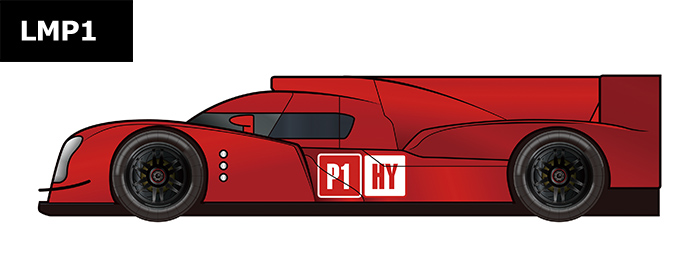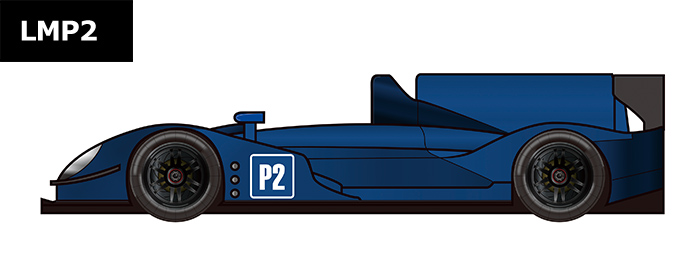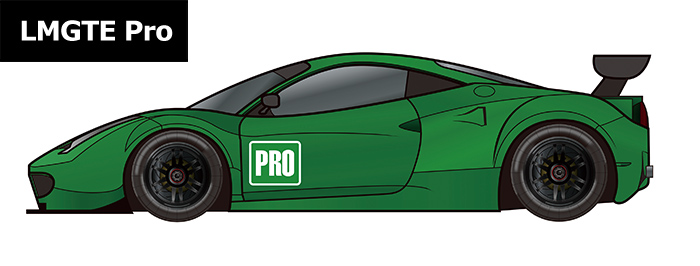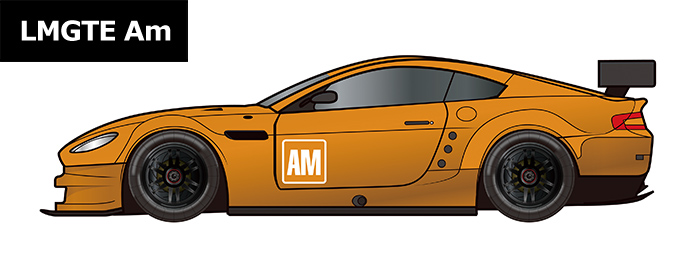Le Mans Prototypes
Le Mans Prototypes are either open or closed two-seaters with no limit on minimum production numbers required that can take full advantage of state-of-the-art technology. As the name suggests, generally they are built especially for the 24 Hours of Le Mans, but also for the WEC, ELMS and ALMS races. They are purpose-built for circuit racing, comply with ACO technical regulations, and the cutting-edge technology they deploy gives extreme performance to make them the top status of endurance racing. Le Mans Prototypes are divided into two classes: LMP1 for manufacturers' works teams and LMP2 for privateer entrants.

The very top class has regulations for turbo charged diesel and hybrid engines. TOYOTA TS030 HYBRID competes in this class. They are either open or closed cockpit cars with a minimum weight of 900 kg. Engine capacities are limited to 3,400 cc for normally-aspirated petrol engines, 2,000 cc for turbo charged petrol engines and 3,700 cc for turbo charged diesels. Fuel tanks are 75 litres for petrol engines (73 litres for hybrids) and 60 litres for diesels (58 litres for hybrids). No Bronze drivers are permitted to enter in this class.

This class is defined as being 'a category especially for privateers' and employs 'cost capping'. They are open or closed cockpit cars of at least 900 kg in weight. Only mass-produced engines are allowed, and they are limited to a maximum of 8 cylinders and 5,000 cc capacity for normally-aspirated cars while 6 cylinders and 3,200 cc for turbo charged cars. Turbo diesels are not allowed. Fuel tanks are 75 liters. One of the drivers must be in Silver or Bronze category.
Le Mans Grand Touring Endurance
Le Mans GT Endurance cars are open or closed competition models based on production sports cars with two doors, and either 2 or 2+2 seats. The class is separated into LMGTE Pro for professional drivers and LMGTE Am for gentleman drivers.

A two-door production GT car with 2 or 2+2 seats, construed by an ACO-recognized manufacturer. The maximum total length is 4,800 mm, and the front and rear overhangs are a maximum of 1,250 mm/ 1,100 mm. The total width can be extended up to +100 mm, but the total height and wheelbase must be the same as the original model. The minimum weight is 1,245 kg, and maximum engine capacity is 5,500 cc for NA engines, 4,000 cc for turbo charged engines. Fuel tanks are 90 litres.

This class is provided for gentleman drivers, and unlike the LMGTE Pro, the car must be at least one year old or have the same specifications as the car form the previous year. LMGTE Pro puts no restrictions on the driver category while in LMGTE Am only one driver in Platinum or Gold category can participate.





































